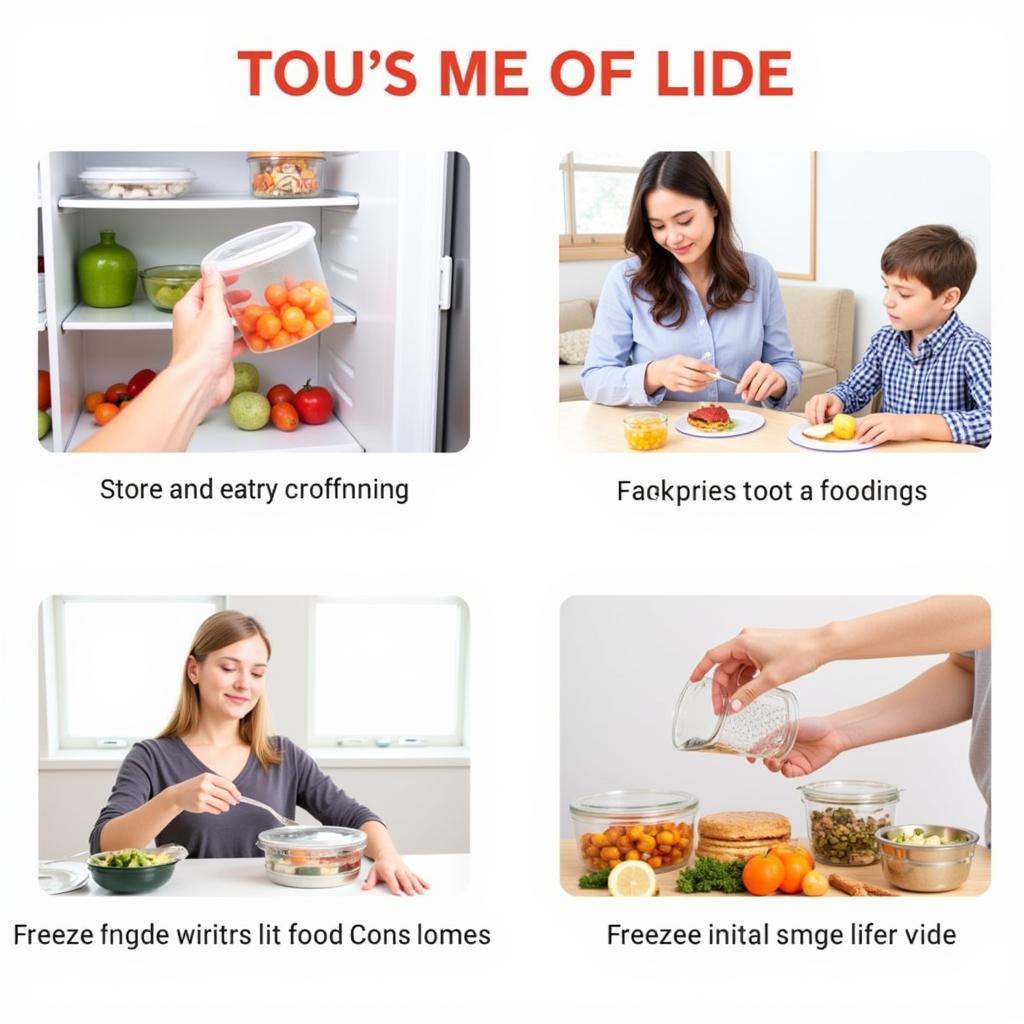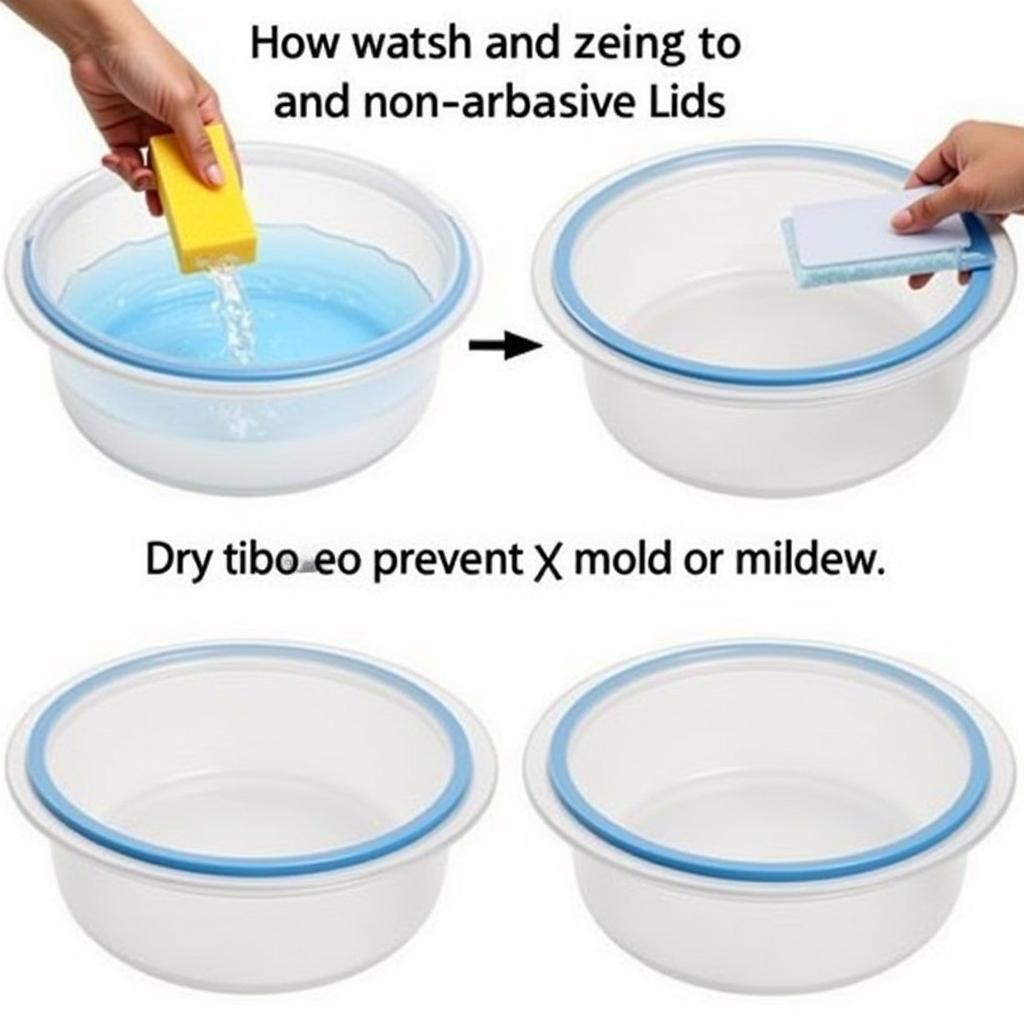Plastic Food Container Lids are essential kitchen companions, keeping our leftovers fresh and our pantries organized. But with so many options available, finding the perfect lid can feel like searching for a needle in a haystack. This guide will delve into the world of plastic food container lids, exploring different types, materials, and features to help you make informed choices for your kitchen. We’ll also look at how to choose the right lid for your needs, whether you’re storing leftovers, packing lunch, or freezing meals for later. Check out our selection of clear plastic food containers with lids wholesale for some great options.
Navigating the World of Plastic Food Container Lids
Plastic food container lids come in a dizzying array of shapes, sizes, and materials. Understanding these variations is key to selecting the right lid for your specific needs. Let’s break down the key factors to consider:
Material Matters: Choosing the Right Plastic
The type of plastic used in a lid significantly impacts its durability, heat resistance, and suitability for different foods and storage methods. Common materials include:
- Polyethylene (PE): A flexible and lightweight plastic, often used for squeezable bottles and some lids.
- Polypropylene (PP): A rigid and heat-resistant plastic, making it a good choice for microwave-safe lids.
- Polystyrene (PS): A brittle plastic typically used for disposable lids, not ideal for reheating.
Size and Shape: Finding the Perfect Fit
Lids are designed to fit specific container shapes and sizes. Ensure a snug fit to prevent leaks and maintain freshness. Consider the shape of your container – round, square, rectangular – and look for lids that correspond.
Special Features: Enhancing Functionality
Beyond the basics, some lids offer special features that enhance their usability:
- Vented Lids: Allow steam to escape, preventing pressure buildup during reheating.
- Snap-On Lids: Provide a secure seal to prevent spills and leaks.
- Leak-Proof Lids: Feature airtight seals, ideal for transporting liquids.
Matching Lids to Your Storage Needs
Different storage scenarios require different lid features. Let’s explore some common uses:
Leftovers: Keeping Food Fresh
For leftovers, airtight lids are essential to prevent spoilage and maintain flavor. Choose lids made from durable, food-safe plastic that can withstand refrigeration and reheating.
Lunch Packing: Leak-Proof and Portable
Packing lunch requires lids that are leak-proof and secure. Snap-on lids or lids with special sealing mechanisms are ideal for preventing spills in your lunch bag. Consider reusable take out food containers for an eco-friendly option.
Freezer Storage: Durable and Freezer-Safe
Freezing food requires lids that can withstand freezing temperatures without becoming brittle or cracking. Look for freezer-safe plastic containers and lids designed specifically for long-term storage.
“Choosing the right lid can significantly extend the life of your leftovers and ensure food safety,” says Sarah Miller, a food safety expert. “Pay attention to the material and features to find the best fit for your needs.”
 Various Uses of Plastic Food Container Lids
Various Uses of Plastic Food Container Lids
Caring for Your Plastic Food Container Lids
Proper care extends the lifespan of your lids and prevents bacterial growth. Follow these tips:
- Wash Thoroughly: Wash lids with warm soapy water after each use.
- Avoid Abrasive Cleaners: Harsh cleaners can scratch the surface of the lid, making it more susceptible to bacterial growth.
- Check for Damage: Inspect lids regularly for cracks or warping. Replace damaged lids to ensure food safety.
If you’re looking for bulk options, you might consider chicken food bulk for larger storage needs.
Conclusion
Choosing the right plastic food container lid is more than just finding a cover. It’s about ensuring food safety, maximizing freshness, and minimizing waste. By understanding the different types of lids available and their intended uses, you can make informed choices that keep your food fresh and your kitchen organized. Consider exploring options like starplast food storage containers or the glad food storage container for quality choices.
“Investing in good quality, durable lids can save you money in the long run by reducing food waste and extending the life of your food storage containers,” adds John Davis, a sustainable living advocate.
FAQ
- Are all plastic food container lids microwave-safe? No, not all lids are microwave-safe. Check the manufacturer’s instructions before microwaving.
- Can I wash plastic lids in the dishwasher? Most plastic lids are dishwasher-safe, but check the manufacturer’s recommendations.
- How do I prevent my plastic lids from warping? Avoid exposing plastic lids to extreme temperatures, such as boiling water or direct sunlight.
- What should I do if my plastic lid cracks? Replace cracked lids immediately to prevent bacterial growth.
- What are the best lids for storing liquids? Look for leak-proof lids with airtight seals to prevent spills.
- How can I organize my plastic lids? Use lid organizers or drawer dividers to keep your lids neat and accessible.
- Are there eco-friendly plastic lid options? Yes, some lids are made from recycled plastic or biodegradable materials.
 Properly Cleaning Plastic Food Container Lids
Properly Cleaning Plastic Food Container Lids
Need more information? Check out our other articles on food storage and kitchen organization. For personalized assistance, contact us at Phone Number: 02437655121, Email: minacones@gmail.com or visit us at 3PGH+8R9, ĐT70A, thôn Trung, Bắc Từ Liêm, Hà Nội, Việt Nam. Our customer service team is available 24/7.